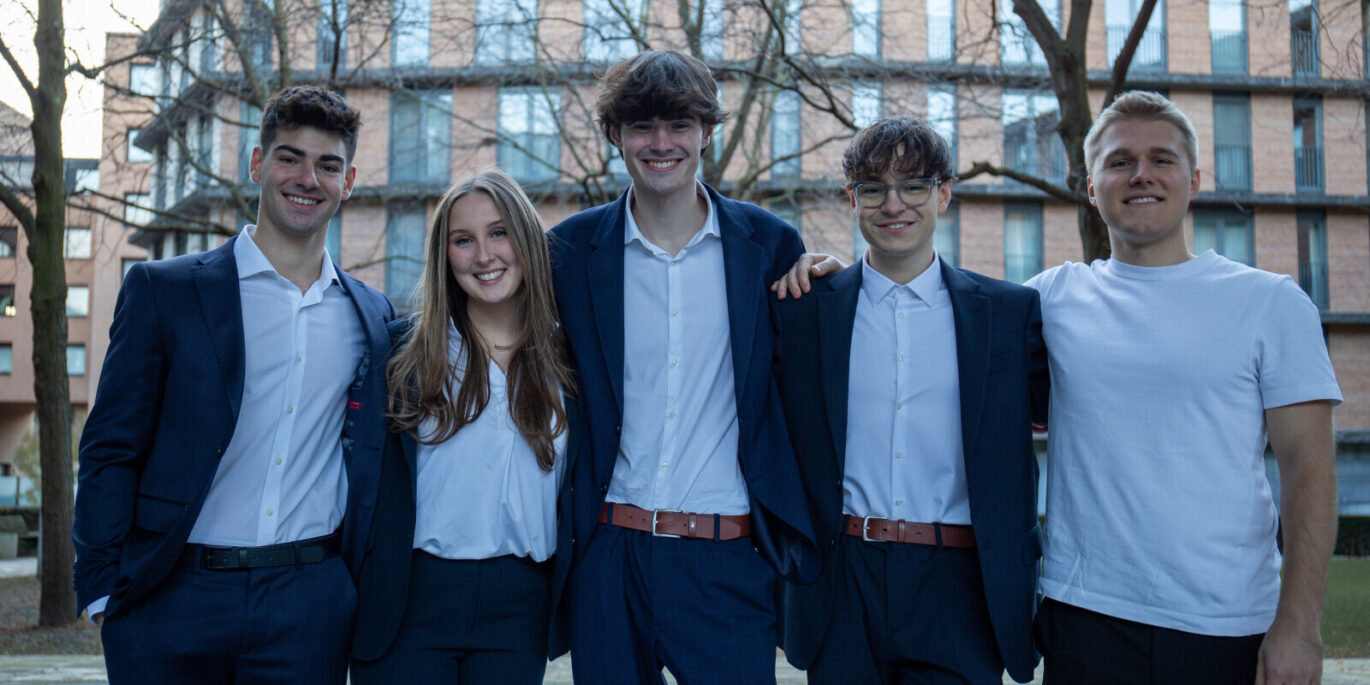At Manchester Students’ Union, this time last year we were looking at a National Student Survey (NSS) score of 41.03% for question 26 – compared to a sector benchmark of 52.07%.
We were understandably disappointed, but as one of the biggest SUs in the country we had known for a long time that we were punching well below our weight.
We are still on a journey and have plenty of work to do to ensure that students at Manchester are getting the experience they deserve, but over the past 18 months we have made a number of changes that we believe have improved how we represent the interests of our students – and has seen us go above the NSS sector benchmark to a 73.65% positive satisfaction rating.
Faculty modelling
As an SU, we made a strategic decision to invest more in our education work, and one of the most significant changes we made last year was to move to a faculty structure through both our elected officers and our staff team.
The University of Manchester has 3 faculties, all the size of medium universities, and each makes their own decisions based on their unique cohorts.
Representing nearly 50,000 students with one education officer and one postgraduate officer across the institution was tricky – and meant that we often weren’t at the table when key decisions were being made.
Following a democratic review and restructure, last year 3 faculty officers and a postgraduate research officer were elected by the student body for the first time – and we matched this with an expanded staff team which included an Education Coordinator to work with each faculty.
Over the past year, both staff and officers have been able to create more meaningful relationships with staff and students within schools and faculties, as well as working more closely with the institution centrally.
Focusing on where the majority of decisions are made, and changing our structures to suit, has massively improved our visibility across the institution and enabled us to ensure that student voice is considered in all major decisions.
Partnership is key
Our partnership with the university has long been a priority and the new faculty structure has meant staff have been able to develop connections with university colleagues and are able to influence processes at every level.
Historically, the vast majority of our key stakeholder relationships sat with our CEO and elected officers. For instance, our education officer went to every central meeting no matter whether a teaching and learning strategy group or an operational working group.
Now we send our best player depending on what’s needed – and expect staff at all levels to foster relationships with relevant university colleagues.
We know that we won’t always agree on things and feel confident in being able to challenge the institution when needed, but this rests on a strong foundation and a commitment from both sides to work together where possible for the benefit of our students.
Quality (assurance) is key
Although our academic representation system is still a massive priority for us, this year we increased our work beyond academic reps to engage much more in the university’s quality assurance cycle.
We involved students in a number of teaching & learning-related forums such as the Annual Review of Teaching and Learning (ARTL) and the development of Student Experience Action Plans (SEAPs).
We also worked in partnership with the university to support their first Teaching and Learning Conference, where we facilitated the student voice strand and delivered a number of sessions to academic staff.
Data driven
Our ambition as an education and advocacy department is to be experts in our students, and to use that expertise to drive change for and with our students.
We recognised that if we wanted to be taken seriously by the institution, our arguments needed to be more data informed, and so research and insight has played a huge role in shaping how we push for change for and with our students.
Over 20,000 students have taken part in our research and insight programme over the past year.
Our Build Your MCR survey 2022 had over 7000 responses – and alongside NSS 2022 formed the backbone of our Teaching Excellence Framework student submission.
Our data was also used in the institution’s submission. TEF was a key focal point in our year and a really useful exercise for us as it pushed us to record, review and collate what students were telling us in a way we hadn’t done before.
Being able to succinctly articulate the key issues affecting the student experience using robust data ensured that we were taken seriously by the institution and we are hopeful that the introduction of an annual student voice report will ensure that the key issues stay on the table until significant progress is made.
As well as a new officer structure, we have also changed how we engage with students democratically and this year introduced amongst other things, all-student votes alongside our new union assembly.
We have moved from 40-50 students deciding on union policy to regularly seeing more than 1000 students voting on policy after every meeting.
Strategic focus
One of the tricky things for any officer team is balancing their individual objectives promised to students through their election manifestos, with the often unpredictable issues that come up during their term of office.
Despite returning to a sense of “normality” following the Covid-19 pandemic, last year was no different and our officer team, like others in the sector, faced amongst other things a cost-of-living crisis, a housing crisis, student occupations and referendums, and continued strike action including the UCU marking and assessment boycott.
With staff support, our officer team managed to pivot between competing priorities and came together to significantly influence the university’s response to these issues. UoM’s £9 million response to the cost-of-living crisis was a direct result of officer input and shaped by our cost of living survey data which engaged over 6500 students.
Next steps
We have come a long way over the past year, we know that we still have lots of work to do if we want to ensure that students truly have a voice and ultimately have a consistently positive student experience across the institution.
We are currently developing a student voice strategy in partnership with the university, which will centre belonging as a key foundation and set out our ambition for student voice and academic partnership across the institution over the next 5 to 10 years.
Our students continue to tell us that they have a voice but that they don’t think it makes any difference, and so we will focus on change making processes within the institution at a course, faculty and institution level, as well as making wins more visible to students along the way.
We are developing our work with PGR students to ensure that they have a strong voice within the institution, as we recognise that this is a cohort we have underserved for too long.
We also recognise the importance of academic communities for our students, both postgrads and undergrads – so are in touch with colleagues across the sector to look at how we might work with academic societies moving forward to aid student belonging and student voice.


















